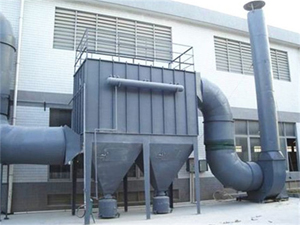By Omela Filtration Engineering Team
In many industrial plants — from cement grinding lines to steel furnaces and chemical processing units — a dust collector’s performance directly determines air quality, compliance, and equipment lifespan. One of the most common engineering mistakes during system design is undersizing the dust collection system.
An undersized system often leads to high differential pressure, poor suction, frequent filter replacement, and non-compliance with emission standards.
At Omela Filtration, we’ve seen that optimizing your dust collector’s size and airflow parameters is not just about equipment selection — it’s about understanding process behavior and dust characteristics.

A/C ratio defines the airflow passing through each square meter of filter media. When it’s too high, filters become overloaded, leading to reduced filtration efficiency and shortened baghouse filter bag life.
➡ Recommendation: For fine dust or sticky particulate, design with lower A/C ratios (e.g., 0.8–1.2 m/min) and consider PTFE or PPS filter media for better cleanability.
Improper duct sizing causes uneven airflow distribution. When the static pressure drop is too high before reaching the dust collector, suction at remote branches drops dramatically.
➡ Recommendation: Calculate total static and dynamic pressure, then ensure your fan curve supports it. Omela engineers use CFD-based simulations to optimize duct design and maintain balanced airflow.
Pulse-jet systems that use insufficient air volume or pressure during cleaning cycles cause residual dust build-up. Over time, this leads to filter “blinding.”
➡ Recommendation: Use reliable compressed air manifolds, proper nozzle spacing, and maintain clean dry air at 5–6 bar.
Many systems are sized for today’s operation but fail to account for future capacity increases or raw material changes.
➡ Recommendation: Always add a 15–20% capacity margin in airflow design. This ensures stable filtration efficiency even under fluctuating process loads.
Omela Filtration specializes in designing and supplying high-performance baghouse filter bags, cages, and components for new installations and retrofits.
Our engineering team helps clients:
Undersizing a dust collection system is one of the most expensive mistakes in industrial air filtration. By focusing on accurate airflow design, proper media selection, and system flexibility, plants can achieve cleaner air, longer filter life, and lower operating costs.
Understanding the Risk: Dust Explosion Fundamentals Dust explosions represent one of the most serious safety hazards in industrial
Introduction Efficient particulate collection is central to modern industrial air pollution control, making the baghouse a familia
By Omela Filtration — Industrial Filtration Experts 1. Industry Background and the Real Problem In pulse-jet dust collector syst